Pallet Inverter Safety Tips for Italy Plants Facing Ergonomic Handling in Boutique Production Plants
Are you watching your team manually handle heavy pallets, day in and day out? I've seen it countless times. A skilled worker strains their back, and suddenly you're facing production delays, worker's compensation claims, and a drop in morale. This isn't just a physical strain on your employees; it's a financial strain on your entire operation. This problem exists everywhere, from small, specialized workshops in Italy to massive industrial plants. You might think it's just the cost of doing business, but this hidden cost is silently eating away at your profits. The solution seems simple: get a pallet inverter to do the heavy lifting. But just buying the machine is only half the battle. Without a deep understanding of safety, you could be trading one set of problems for another.
The most important safety tips for using a pallet inverter, whether in a high-volume factory or a boutique Italian plant, center on four key areas. First, you must provide thorough training for every operator. Second, you need to create a secure, clearly defined work zone around the machine using physical guards and sensors. Third, you must commit to a consistent, proactive maintenance schedule. Finally, you have to ensure the machine you choose is perfectly suited for your specific loads and workflow. Mastering these four pillars is the only way to transform your pallet inverter from a simple machine into a truly safe and productive asset.
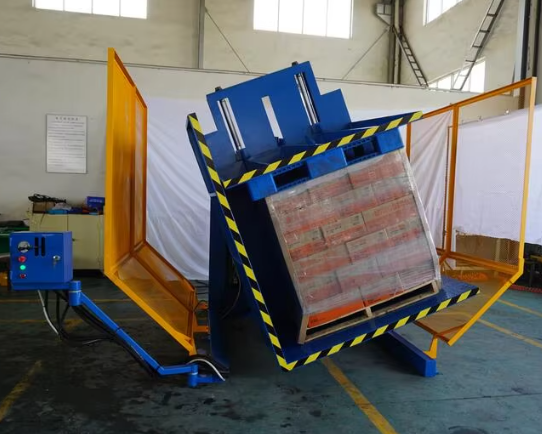
These points might seem straightforward. But my journey from a machine factory employee to a factory owner taught me that the details are what separate a successful investment from a failed one. A safety manual collecting dust on a shelf does nothing. True safety is an active culture, not a passive document. It’s about understanding the 'why' behind each rule. Let’s go deeper than the basic list. I want to share the practical insights I've gained over the years, the kind of knowledge that helps you not just meet standards, but exceed them. I will help you build a system that protects your people, your product, and your bottom line.
Why is Proper Operator Training the First Line of Defense?
You’ve made the investment. A brand-new pallet inverter sits on your factory floor, promising to boost efficiency and improve ergonomics. But your team is hesitant. They see a large, powerful machine, and they're unsure how to use it correctly. Or worse, they develop unsafe shortcuts to get the job done faster. This is a problem I see often. The investment in hardware isn't matched by an investment in people. This gap creates risk. It can lead to accidents that damage the machine, destroy your product, or, most importantly, injure an employee. The root of the problem isn't the equipment; it's the lack of confidence and knowledge.
Proper operator training is your first and most critical line of defense because it empowers your team. It transforms the pallet inverter from an intimidating object into a predictable, safe, and effective tool. A well-trained operator understands the machine's capabilities and its limitations. They know the correct operating sequence, the function of every button and safety feature, and exactly what to do in an emergency. This knowledge practically eliminates the single biggest cause of industrial accidents: human error. When your team is trained, they work with confidence, not fear.
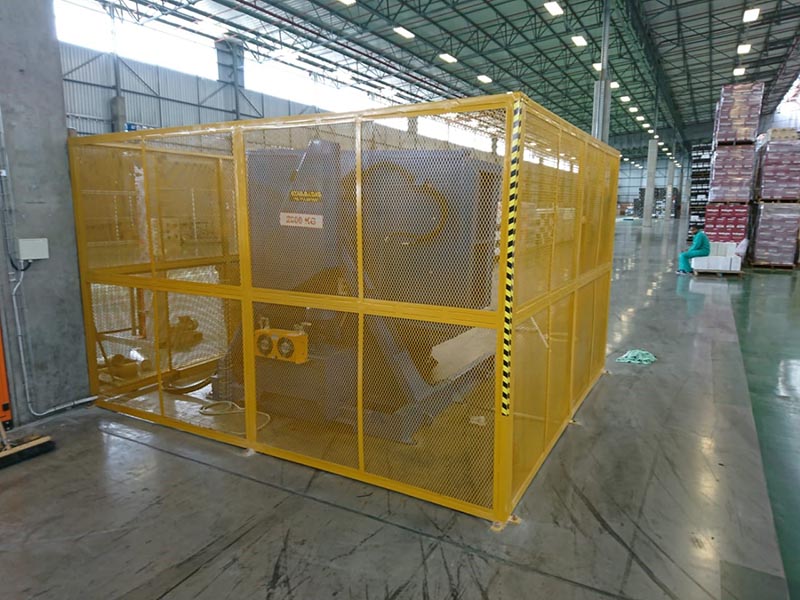
The Core Components of an Effective Training Program
A complete training program isn't just a quick demo. It must be a structured process. It starts with theory. Your team needs to understand the machine's purpose and the physics behind it. Why does the clamping pressure matter? What forces are at play during the inversion cycle? Next comes a hands-on demonstration from an expert. This shows the correct, safe way to operate the machine. After that, each operator needs supervised, practical experience. They should run the machine with typical loads they will encounter daily. Finally, there must be an assessment. This isn't about passing or failing; it's about confirming their competence and identifying any areas where they need more support.
Training for Everyone, Not Just Operators
The operators are not the only ones who need training. Supervisors must also be trained. They need to know what safe operation looks like so they can enforce procedures and correct risky behavior. Your maintenance team needs specialized training, too. They must understand the machine's hydraulic, electrical, and mechanical systems to perform maintenance and repairs safely. In my experience, a comprehensive approach that includes all these roles creates a powerful safety culture. When I was starting my own factory, I made this a non-negotiable rule. Our accident rate was incredibly low, not because we were lucky, but because everyone, from the floor to the office, understood their role in the safety chain.
The True Cost of Skipping Training
Some owners see training as an expense. I see it as an investment with a huge return. Think about the costs of not training properly.
| Metric | Well-Trained Team | Poorly-Trained Team |
|---|---|---|
| Efficiency | Smooth, consistent cycle times. | Hesitant operation, frequent errors. |
| Accident Rate | Near zero. | High risk of minor and major incidents. |
| Product Damage | Minimal, correct clamping pressure used. | Crushed or dropped goods are common. |
| Machine Lifespan | Maximized through proper use. | Premature wear and tear, frequent breakdowns. |
| Employee Morale | Confident and empowered. | Stressed and fearful. |
The numbers speak for themselves. The initial cost of a thorough training program is tiny compared to the long-term costs of downtime, repairs, damaged goods, and potential legal issues from an accident. It is the single best thing you can do to protect your investment.
How Do You Create a Truly Safe Work Zone Around a Pallet Inverter?
You've put yellow and black tape on the floor around your pallet inverter. You might even have a sign that says "Keep Clear." You think you have created a safe zone. But then you see a worker cut a corner, walking right through that taped-off area while the machine is moving. A forklift driver gets a little too close. The problem is that passive warnings are easy to ignore in a busy production environment. People become complacent, and that's when accidents happen. A truly safe work zone is not just a suggestion on the floor; it's a system that makes it nearly impossible for someone to put themselves in danger.
A truly safe work zone is built with multiple layers of protection that work together. It starts with physical barriers. This means robust safety fencing that physically prevents unauthorized access. These fences should have interlocked gates. If a gate is opened, a switch sends a signal that immediately and safely stops the machine's cycle. The next layer is electronic. This involves presence-sensing devices like light curtains or laser scanners. These create an invisible field of light. If a person or object breaks that field while the machine is in a hazardous part of its cycle, it stops automatically. This multi-layered approach removes human error from the equation.
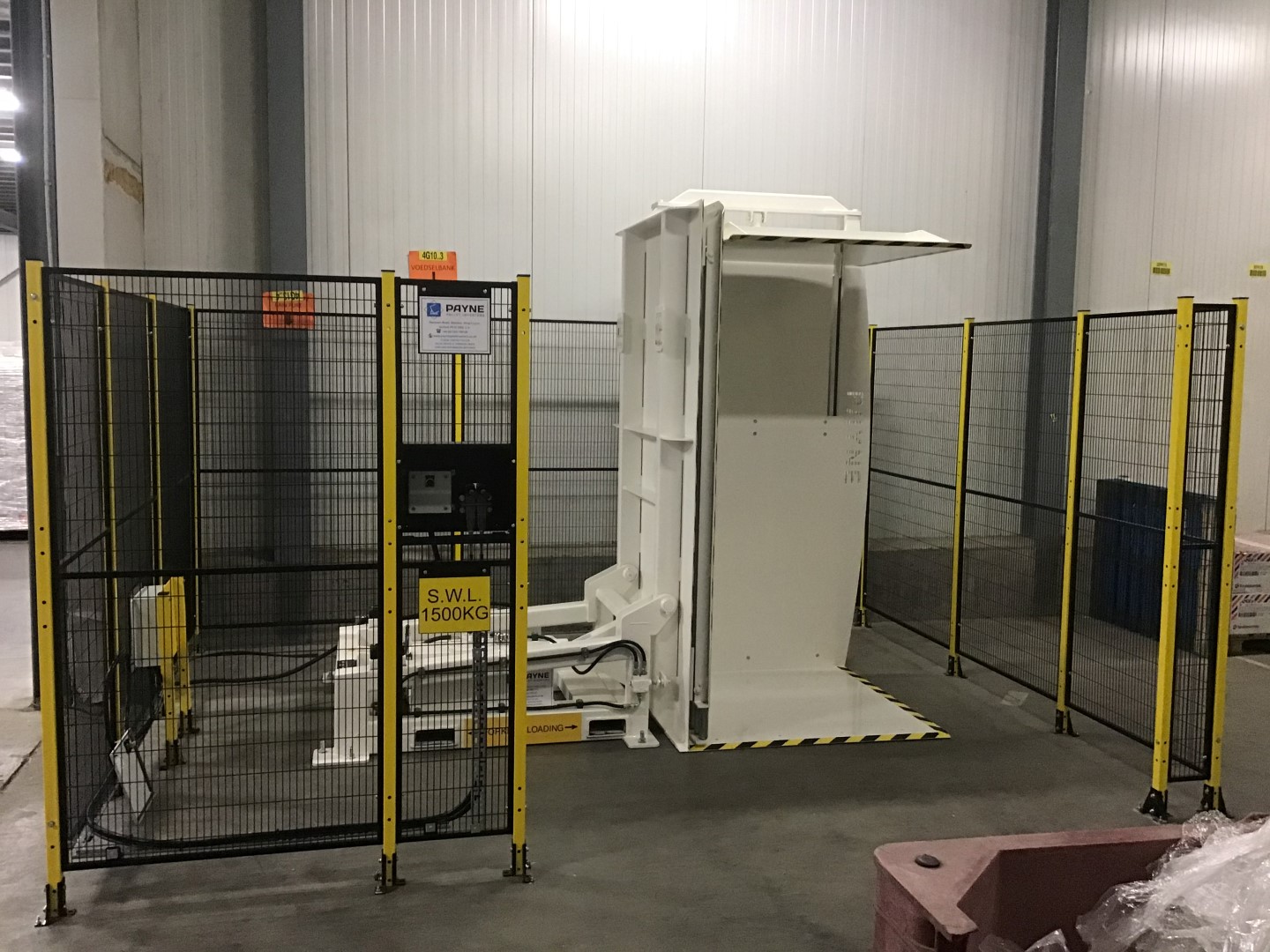
Physical Barriers vs. Electronic Guards
Choosing the right type of guarding is critical. Physical fencing is the most straightforward solution. It provides a clear, unmistakable barrier. It’s durable and effective. However, it can sometimes be restrictive in plants where space is at a premium, like some of the boutique producers I've visited in Italy. This is where electronic guards shine. Light curtains provide protection without taking up extra floor space. They allow for easier access for tasks like loading and unloading with a forklift, as long as they are properly integrated into the machine's safety circuit. The best solution often combines both. You might use physical fencing on three sides and a light curtain on the access side.
Integrating with Factory Traffic Flow
A pallet inverter doesn't exist in a vacuum. It is part of a larger ecosystem of forklifts, workers, and materials moving around it. A safe zone must be designed with this traffic flow in mind. I always advise clients to map out their factory floor. Where do the forklifts need to go to load and unload the inverter? Where are the primary pedestrian walkways? The safety zone should be designed to keep these paths separate. You may need to create dedicated loading/unloading bays and clearly marked pedestrian routes that guide people safely around the machine's operating envelope. This simple act of planning prevents a huge number of potential conflicts and near-misses.
Comparing Safety Measures for Your Plant
The right choice depends on your budget, space, and operating needs. A large steel plant has different needs than a small food producer. Let’s compare the options.
| Safety Measure | Cost | Effectiveness | Best For... |
|---|---|---|---|
| Floor Tape & Signs | Low | Low (Passive warning only) | Supplementing other measures, never primary. |
| Safety Fencing | Medium | High (Physical barrier) | Permanent installations, high-traffic areas. |
| Interlocked Gates | Medium | Very High (Forces machine stop) | All access points in a physical fence. |
| Light Curtains | High | Very High (Flexible protection) | Areas needing frequent, open access for forklifts. |
I once visited a client who relied only on floor tape. During the visit, I saw a forklift driver reverse too far, and his forks entered the machine's path just as it began to tilt. We were lucky. Nothing was damaged. But it showed them how easily a serious accident could happen. The next week, they installed a full safety cage with an interlocked gate. It’s a story I tell often because it proves that investing in proper, active safety systems is not an option; it's a necessity.
What Does a Proactive Maintenance Schedule Actually Look Like?
Your pallet inverter is a workhorse. It runs shift after shift, handling heavy loads without complaint. It's easy to forget about it until it stops working. When it breaks down, everything grinds to a halt. Production stops. Your team is idle. You have to make an urgent, expensive call for a technician and wait for parts to arrive. This reactive "fix it when it breaks" approach is common, but it's also incredibly inefficient and costly. A proactive approach, where you care for the machine before it fails, is the key to maximizing uptime and protecting your investment.
A proactive maintenance schedule is a structured plan. It is not random. It involves different checks at different intervals, from daily tasks for the operator to more in-depth service by a qualified technician. The schedule should be based on the manufacturer's recommendations but also tailored to your specific usage. It focuses on inspecting critical systems like hydraulics for leaks, checking electrical connections for tightness, lubricating all moving parts, and regularly testing all safety features like emergency stops and light curtains to ensure they are working perfectly. This isn't just about preventing breakdowns; it's about ensuring the machine operates safely every single time.
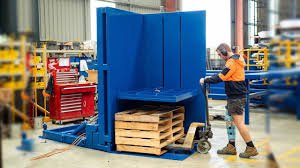
Daily Checks for the Operator
The operator is the person who knows the machine best. They should be trained to perform a quick, simple check at the start of every shift. This is not a complex technical inspection. It is a simple walk-around. They should look for obvious issues like leaking hydraulic fluid, listen for any unusual noises, and check that the area is clear of debris. They should also perform a quick test of the E-stop button to ensure it functions. This simple 5-minute routine can catch small problems before they become major failures. It empowers the operator and makes them a partner in the machine's reliability.
Weekly and Monthly Technical Inspections
These checks are more detailed and should be performed by your in-house maintenance team or a qualified technician. They go deeper than the daily check. This involves checking hydraulic pressure and fluid levels, inspecting hoses and fittings for wear, lubricating chains and bearings, and testing the alignment of the clamping platforms. On a monthly basis, they should check the torque on critical bolts and inspect the electrical cabinet for any signs of overheating or loose connections. This routine is the heart of preventive maintenance. It ensures the machine runs as efficiently and safely as the day it was installed.
Sample Proactive Maintenance Checklist
A checklist ensures nothing is missed. It creates consistency and accountability. Here is a simplified example of what this might look like.
| Frequency | Task | Checkpoint | Status (OK/Action) |
|---|---|---|---|
| Daily | Visual Inspection | Check for leaks, damage, debris. | |
| Daily | Safety Function Test | Press E-stop button, test guards. | |
| Daily | Listen for Noise | Note any unusual sounds during cycle. | |
| Weekly | Lubrication | Grease all specified points. | |
| Weekly | Hydraulic System | Check fluid level and clarity. | |
| Weekly | Mechanical | Inspect chains/belts for tension. | |
| Monthly | Electrical | Check connections in control panel. | |
| Monthly | Structural | Check torque on key mounting bolts. |
This is the kind of system that helps business owners achieve goals like 95% equipment uptime. When I founded SHJLPACK, I did it because I wanted to provide a "TOTAL SOLUTION". A total solution doesn't end when the machine is delivered. It includes sharing the knowledge needed to run it reliably for years. A proactive maintenance schedule is a core part of that knowledge. It's how you move from simply owning a machine to mastering your production process.
How Can Choosing the Right Inverter for Boutique Production Impact Safety from Day One?
Many business owners, especially those in specialized or "boutique" operations, assume all pallet inverters do the same thing. They often look at a catalog and choose a model based on capacity and price. But this can be a serious mistake. The wrong machine, even if it's a high-quality one, can create entirely new safety and ergonomic problems if it doesn't fit your specific product, space, and workflow. I've seen this happen. A machine that is too large for a small Italian workshop creates dangerous traffic jams. A standard clamping mechanism crushes fragile, high-value goods. Choosing the right machine from the very beginning is the true foundation of safety and efficiency.
Choosing the right inverter for a boutique environment fundamentally impacts safety because a machine that is perfectly matched to the job is inherently safer to use. When the machine's footprint fits the available space, workers don't have to squeeze past it. When the controls are intuitive for the specific task, operators make fewer errors. When the clamping pressure is designed for a delicate product like artisanal cheese or glass, you prevent product from being damaged and creating a mess or a hazard. A well-suited machine integrates seamlessly. It feels like a natural extension of your process, not a clumsy obstacle.
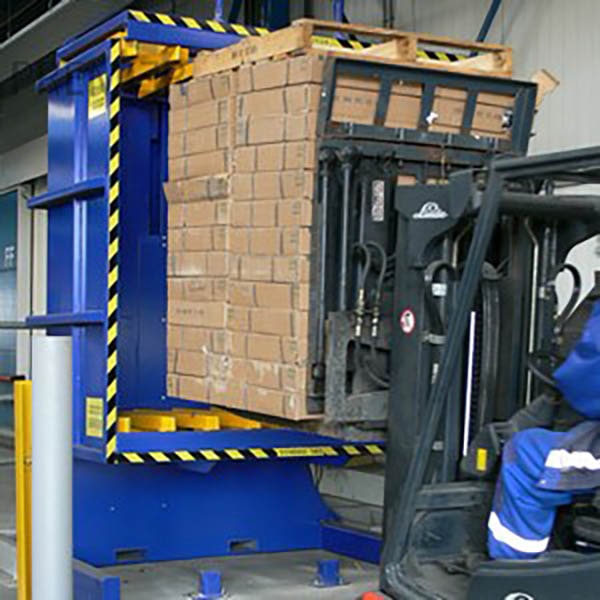
Footprint and Layout in Tight Spaces
Boutique production plants, like many I've worked with in regions like Italy, often operate in older buildings where space is limited. You cannot just drop a standard, large-footprint machine into the middle of the floor. This is where customization is key. As an engineer, I love this challenge. We can design machines with a smaller base, or machines that load and unload from the same side (90-degree entry/exit) to save space. We can orient the control panel to fit the best operator position. This thoughtful approach to layout prevents collisions with forklifts and ensures there is safe, adequate room for workers to move around the machine. It turns a potential hazard into a streamlined part of the production line.
Matching Clamping Pressure to Your Product
This is one of the most important but overlooked aspects of selection. A steel mill owner needs an inverter that can clamp a multi-ton coil of steel with immense force. But a producer of fine wines or electronics needs the opposite. They need a gentle, precise touch. Using a machine built for heavy industry on delicate goods is a recipe for disaster. This is why adjustable clamping pressure is so critical. For very sensitive products, we can even design custom-shaped or padded clamping tables that cradle the product securely without damaging it. This level of detail ensures the safety of your product, which is directly tied to the financial health of your business. Damaged goods are lost profits.
Customization is the Key to True ROI
An off-the-shelf machine might seem cheaper upfront, but a customized solution often provides a much higher return on investment (ROI) when you factor in safety, efficiency, and product protection. This is the core belief that led me to start SHJLPACK. I was tired of seeing clients forced to adapt their process to a standard machine. My goal is to adapt the machine to the client's process.
| Feature | Standard "One-Size-Fits-All" Inverter | SHJLPACK Customized Inverter |
|---|---|---|
| Safety | Standard guards may not fit the space well. | Guards, sensors, and layout designed for your plant. |
| Efficiency | Operators may need extra steps to work around it. | Integrates perfectly into workflow, minimizing motion. |
| Ergonomics | Control panel might be in an awkward location. | Controls are placed in the ideal position for your operator. |
| Product Care | Standard clamping may damage unique products. | Clamping pressure and tables designed for your load. |
| Long-Term ROI | Lower initial cost, but higher risk of accidents, damage, and inefficiency. | Higher initial investment, but maximized safety, uptime, and profitability. |
This is what I mean by a "TOTAL SOLUTION". It's not just about selling a machine. It's about engineering a solution that solves a client's specific ergonomic and handling challenges from day one. It’s about being a partner, not just a supplier.
Conclusion
Investing in a pallet inverter is about more than equipment. It’s about creating a safer, more efficient, and more profitable workplace. These principles ensure you achieve that goal.



